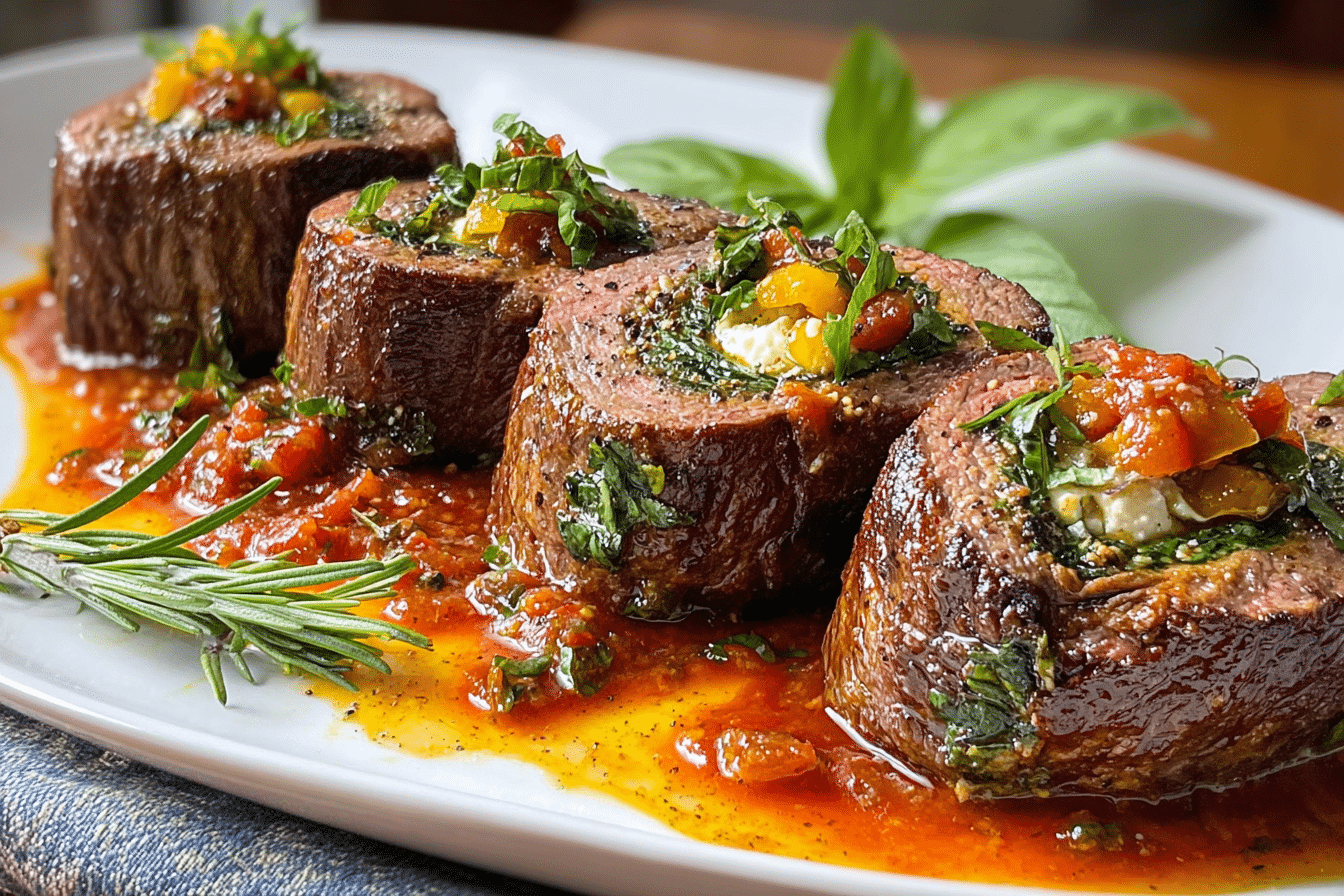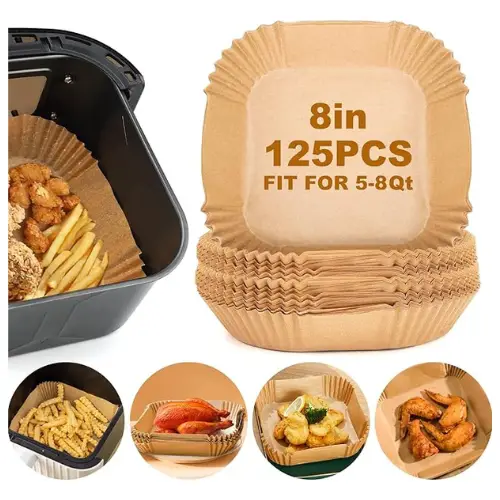Beef Braciole is more than just a comforting Italian meal—it’s a bite of heritage wrapped in tender steak, infused with creamy cheeses, fresh herbs, and rich marinara. At CookTune, we’re not just about sharing recipes—we live for them. Our story started with a humble kitchen and a big appetite for discovering flavors passed down through generations. Whether you’re looking for the next dish to impress your dinner guests or reconnecting with your Italian roots, this Beef Braciole recipe brings the best of both worlds. Plus, we’ve scoured top-ranking recipe sites to bring you a foolproof guide that’s as authentic as it is delicious.
Disclosure: This post contains affiliate links.If you click and make a purchase, I may earn a small commission at no extra cost to you.
Want more bold comfort-food ideas? Don’t miss our Hot Honey Ranch Sauce, and discover rich, cozy flavor in Short Rib Ragu.
Let’s roll into the savory world of Beef Braciole.
Table of Contents
Table of Contents
Understanding Beef Braciole: Origins & Traditions
What is Beef Braciole?
Beef Braciole (pronounced “brah-jole”) is a traditional Italian dish made by stuffing thin slices of beef—often flank steak—with a mixture of cheeses, breadcrumbs, herbs, and sometimes cured meats, then searing and simmering it in marinara sauce until tender. This dish is especially popular in Southern Italy and in Italian-American households, often served on Sundays or holidays.
Cultural Significance of Braciole in Italian Cuisine
Historically, Braciole was a peasant dish—a clever way to turn tougher cuts of meat into something unforgettable. Stuffed, rolled, and slow-cooked, it became a staple at family tables across generations. Its importance in Italian-American culture was also immortalized in pop culture—remember Paulie’s Braciole from The Sopranos? It’s more than a meal; it’s a memory in the making.
Different Regional Variations
From Sicily to Naples, variations abound. In some regions, hard-boiled eggs or prosciutto are part of the filling. Others swap out marinara for wine-based sauces. Whether rolled with pine nuts, raisins, or no cheese at all, every region—and every Nonna—has her own spin.
Essential Ingredients for Authentic Beef Braciole
Choosing the Right Cut: Why Flank Steak Works Best
The success of Beef Braciole starts with the right meat. Flank steak is ideal because it’s lean, thin, and becomes incredibly tender when slow-cooked. Once pounded flat, it rolls beautifully and absorbs the sauce while cooking. Other acceptable alternatives include top round or skirt steak, but flank remains the gold standard for both flavor and structure.
Print
How to Create Mouthwatering Beef Braciole for Dinner Party
- Prep Time: 30 minutes
- Cook Time: 2 hours
- Total Time: 2 hours 30 minutes
- Yield: 4 servings
- Category: Main Course
- Method: Simmering
- Cuisine: Italian
- Diet: Halal
Description
Beef Braciole is a classic Italian dish made by rolling thin slices of beef around a savory filling of breadcrumbs, cheese, and herbs, then simmering the rolls in a rich tomato sauce until tender and flavorful.
Ingredients
- 1 1/2 pounds thinly sliced beef (top round or flank steak)
- 1/2 cup Italian-style breadcrumbs
- 1/4 cup grated Parmesan cheese
- 2 cloves garlic, minced
- 2 tbsp chopped fresh parsley
- 1 tsp dried oregano
- Salt and pepper, to taste
- 2 tbsp olive oil
- 1 large egg, beaten
- 1 (28 oz) can crushed tomatoes
- 1/2 cup dry red wine (optional)
- 1/2 onion, finely chopped
- 2 tbsp olive oil (for sauce)
- Kitchen twine or toothpicks (for securing rolls)
Instructions
- Place beef slices between plastic wrap and pound to about ¼-inch thickness.
- In a bowl, combine breadcrumbs, Parmesan, garlic, parsley, oregano, salt, pepper, and beaten egg to form a moist filling.
- Spread a thin layer of filling over each beef slice, then roll tightly and secure with kitchen twine or toothpicks.
- Heat 2 tbsp olive oil in a large skillet over medium-high heat. Brown beef rolls on all sides, then remove and set aside.
- In the same skillet, add 2 tbsp olive oil and sauté onion until soft. Add crushed tomatoes and wine (if using); stir to combine.
- Return beef rolls to the skillet, cover, and simmer on low for 1.5 to 2 hours until beef is tender and sauce is thickened.
- Remove twine or toothpicks before serving. Serve hot with pasta, polenta, or crusty bread.
Notes
- Can be prepared a day in advance—the flavor improves overnight.
- Use thin-cut steak to ensure easy rolling and tender results.
- Leftovers reheat well and freeze beautifully.
- For a spicy kick, add red pepper flakes to the sauce.
Nutrition
- Serving Size: 1 beef roll with sauce
- Calories: 410
- Sugar: 6g
- Sodium: 480mg
- Fat: 22g
- Saturated Fat: 7g
- Unsaturated Fat: 13g
- Trans Fat: 0g
- Carbohydrates: 16g
- Fiber: 3g
- Protein: 36g
- Cholesterol: 110mg
The Flavorful Filling: Cheese, Herbs & Breadcrumb Magic
The filling is where the heart of Braciole lies. This isn’t just any stuffing—it’s a creamy, herb-packed mixture that melts inside the meat.
Here’s a closer look at what makes it perfect:
| Ingredient | Role in Flavor |
|---|---|
| Ricotta Cheese | Adds creaminess and lightness |
| Parmesan Cheese | Offers a salty, nutty depth |
| Breadcrumbs | Provides structure and soaks flavor |
| Fresh Spinach | Adds texture, moisture, and nutrients |
| Garlic | A must-have for Italian aroma |
| Basil & Parsley | Brightens up the richness |
Want to boost your stuffing flavor? Try adding a touch of lemon zest or even sun-dried tomatoes.
Marinara Sauce: Homemade vs. Store-Bought
A rich tomato marinara sauce ties it all together. While store-bought works in a pinch, homemade marinara lets you control the sweetness, acidity, and spice level. It’s all about simmering crushed tomatoes with garlic, onions, and fresh herbs until thick and velvety.
Here’s a quick breakdown of both:
| Type | Pros | Cons |
|---|---|---|
| Homemade | Fresh, customizable, richer flavor | Takes more time and effort |
| Store-bought | Convenient, shelf-stable | May contain added sugar/preservatives |
Looking for inspiration? Try our creamy dip twist with Giardiniera Dip—it offers a tangy note that pairs well with any tomato base.
Don’t Forget the Extras: Twine, Toothpicks & Olive Oil
Beyond the ingredients, the cooking gear matters too. You’ll need:
- Toothpicks or kitchen twine to secure the roll
- Olive oil for that golden sear
- An oven-safe skillet to go from stovetop to oven seamlessly
Still curious about Italian-style beef dishes? Discover Smothered Beef Rolls for more rustic comfort food ideas.
Step-by-Step Instructions for Making Beef Braciole
Step 1: Prep the Beef Like a Pro
Start by laying your 1-pound flank steak on a sturdy cutting board. Using a meat mallet, pound the steak until it’s about 1/4-inch thick. This tenderizes the meat and makes it easier to roll. Season both sides generously with salt and freshly ground black pepper.
Pro Tip: To avoid splatter, place plastic wrap over the meat while pounding.
Step 2: Create the Filling
In a medium mixing bowl, combine:
- 1 cup chopped fresh spinach
- 1/2 cup ricotta cheese
- 1/2 cup grated Parmesan cheese
- 1/2 cup breadcrumbs
- 2 minced garlic cloves
- 1 tbsp each of fresh chopped basil and parsley
Mix until fully incorporated. The texture should be thick but spreadable.
Want a richer bite? Add 2 tbsp of shredded provolone for a cheesier core.
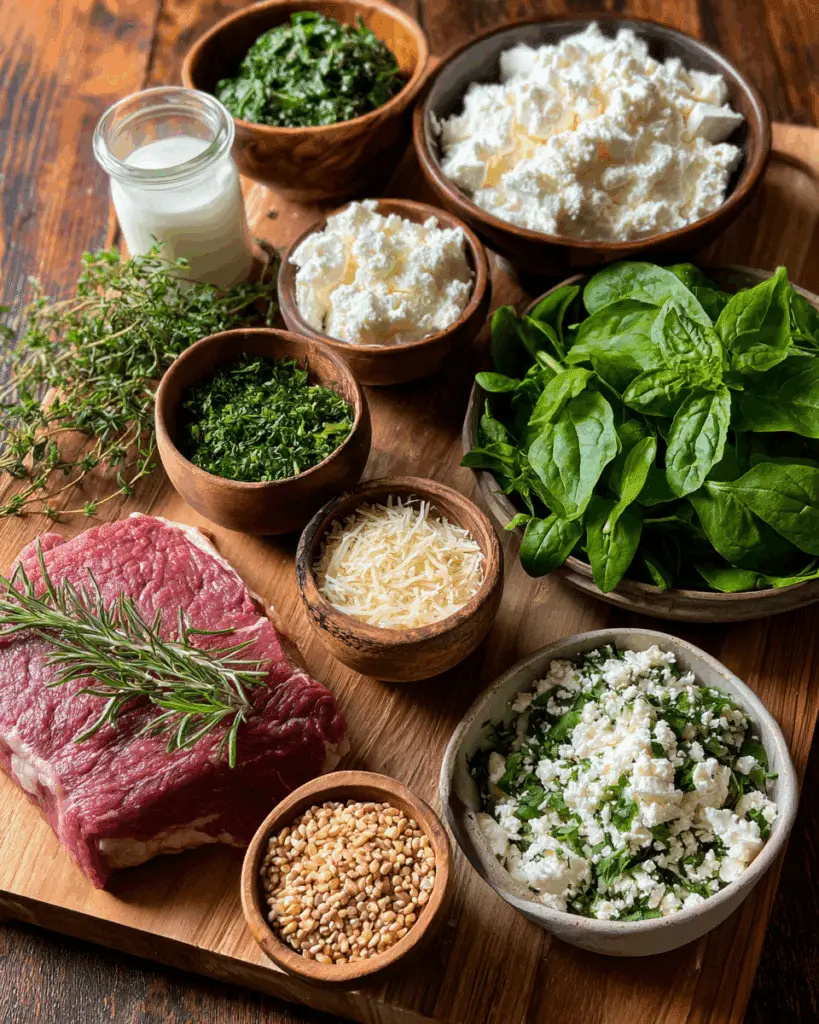
Step 3: Assemble the Roll
Spread the filling evenly over the flattened beef, leaving about a 1-inch border around the edges. Begin rolling the meat from the shorter end, tucking in as you go to keep the filling tight. Once rolled, secure it using toothpicks or kitchen twine spaced 1–2 inches apart.
Safety tip: Count your toothpicks so none get lost in the final dish!
Step 4: Sear for Maximum Flavor
Heat 2 tbsp of olive oil in an oven-safe skillet over medium-high heat. Once hot, add the rolled Braciole seam-side down. Sear each side for 3-4 minutes until beautifully browned. This step locks in the flavor and adds a delicious crust.
Looking for hearty sauce pairings? You might love our Beef Short Rib Ragu with Parmesan Polenta.
Step 5: Bake in Marinara Sauce
After searing, pour 2 cups of marinara sauce over the Braciole in the skillet. Cover tightly with foil or a lid and transfer to a preheated oven at 350°F (175°C). Bake for 30–35 minutes, or until the internal temperature hits 145°F (63°C).
Optional Add-In: Add a splash of red wine or beef stock to the marinara for deeper flavor.
Step 6: Rest, Slice, and Serve
Remove the skillet from the oven and let it rest for 5–10 minutes. This keeps the juices locked in. Then, remove toothpicks or twine, and slice the Braciole into 1-inch thick pinwheels. Spoon extra marinara sauce over the top before serving.
This dish pairs wonderfully with polenta, mashed potatoes, or garlic butter pasta.
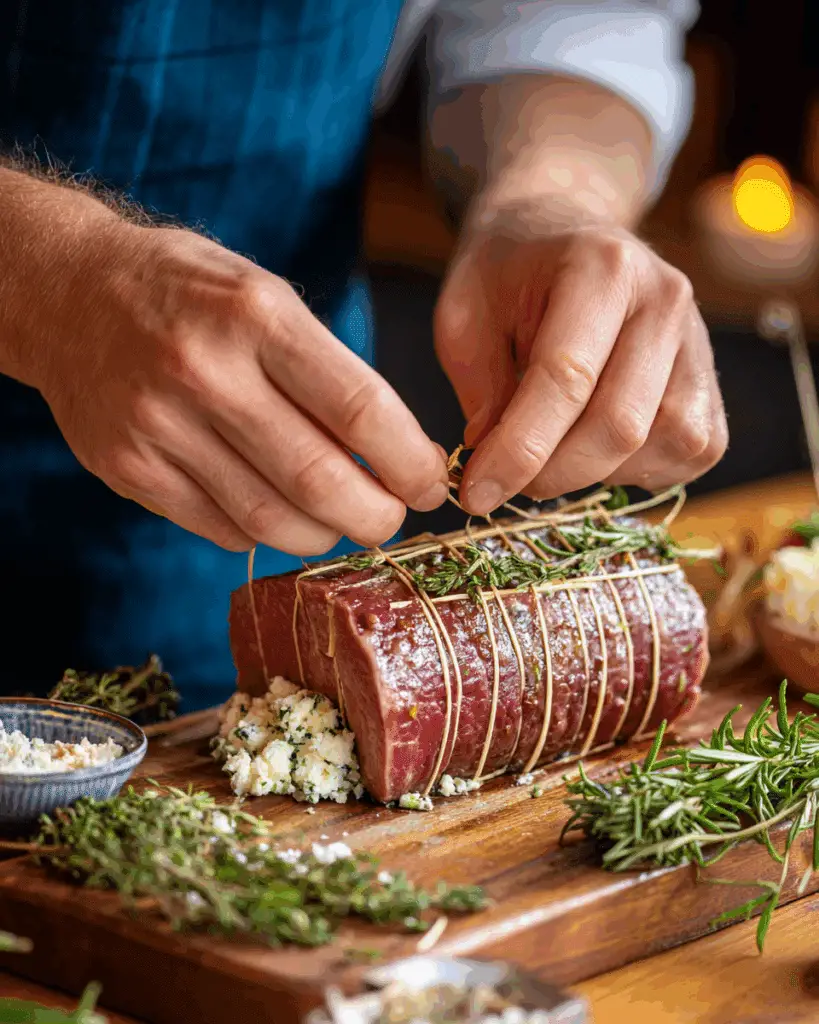
Common Mistakes to Avoid When Making Braciole
Mistake #1: Not Pounding the Beef Thin Enough
If your beef isn’t thin enough, it won’t roll tightly and may remain tough even after cooking. Always pound your flank steak down to about 1/4-inch thickness. Thinner meat ensures tenderness and helps the stuffing hold together once rolled.
Fix: Use a meat mallet or rolling pin and apply even pressure—don’t skip this prep step.
Mistake #2: Overstuffing the Roll
Tempting as it is to pack in extra filling, too much stuffing will leak out during searing or baking. This can create a mess and leave the roll undercooked in the center.
Fix: Leave a clean 1-inch border on all sides and spread filling evenly. Think of it like rolling sushi—tight and balanced wins.
Mistake #3: Forgetting to Secure the Roll Properly
Loose Braciole unravels easily in the skillet or oven. If you don’t tie or toothpick it snugly, expect disaster.
Fix: Use kitchen twine every 1–2 inches or multiple toothpicks (just remember to remove them before serving!). Make sure both ends of the roll are tucked in to hold everything inside.
Mistake #4: Skipping the Sear
Searing adds depth, texture, and prevents the meat from becoming mushy in the sauce. If you skip it, your dish will taste flat—even with great sauce.
Fix: Sear all sides until golden brown before transferring to the oven. This caramelizes the exterior and locks in moisture.
Mistake #5: Cooking Without Covering
Braciole needs moisture to become tender. Baking it uncovered will cause the sauce to dry out and the beef to toughen.
Fix: Always cover your skillet or baking dish tightly with foil or a lid. This traps steam and infuses the roll with saucy goodness.
Mistake #6: Rushing the Resting Period
After baking, cutting into the meat too soon causes juices to escape. That means a drier slice and less flavor.
Fix: Let the roll rest 5–10 minutes before slicing. This makes slicing easier.
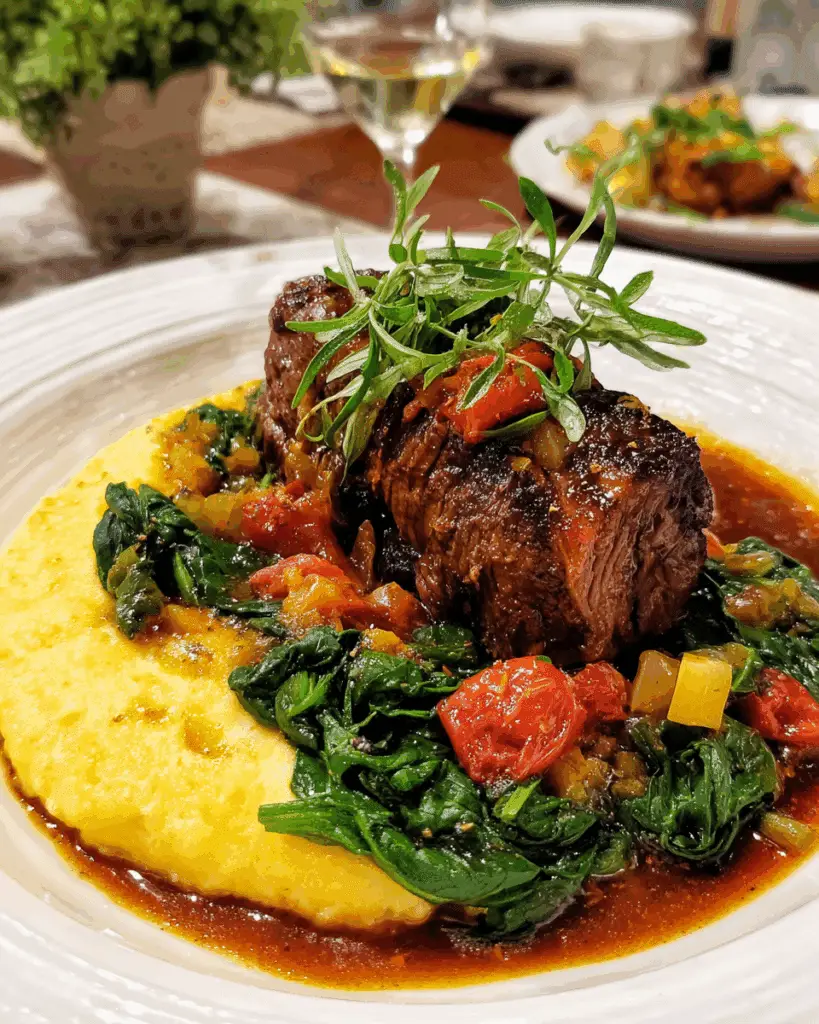
Perfect Side Dishes and Pairings for Beef Braciole
Carb Companions: Pasta, Polenta & Bread
Beef Braciole is saucy, savory, and begging for something to soak it up. These carb-heavy sides are the ultimate matchmakers:
- Buttery Polenta: Soft, creamy polenta is a traditional Italian pairing that enhances the richness of the marinara. Add a sprinkle of Parmesan and a dash of black pepper to amplify the flavor.
- Al Dente Pasta: Tagliatelle, rigatoni, or spaghetti make excellent beds for those savory beef rolls. Toss lightly in olive oil or extra marinara.
- Crusty Italian Bread: A few warm slices are perfect for mopping up the sauce—and trust us, you won’t want to leave a drop behind.
Want something heartier? This creamy Parmesan polenta version is a must-try side that complements Braciole beautifully.
Greens that Balance the Richness
To offset the rich and hearty profile of Beef Braciole, you’ll want fresh, acidic, or slightly bitter greens on the plate. Think:
- Arugula Salad with Lemon Vinaigrette: Peppery and bright, this salad slices through the richness like a pro.
- Sautéed Broccolini or Spinach: Cooked with garlic and olive oil, these veggies complement the herb-stuffed Braciole without stealing the spotlight.
- Caprese Salad: Mozzarella, tomatoes, and basil bring freshness and color to your plate.
If you’re a salad fan, don’t miss out on our Giardiniera Dip—it pairs well with raw veggies and makes a zesty starter.
Wine & Beverage Pairings
A rich, tomato-based beef dish like Braciole needs a bold wine or bright beverage to balance the umami:
- Red Wine: Chianti, Barbera, or a bold Cabernet Sauvignon work beautifully.
- Sparkling Water with Lemon: Keeps things light and refreshing for non-drinkers.
- Light Italian Beer: A crisp lager cuts the fat and cools the palate.
Make-Ahead Tips & Freezer-Friendly Braciole
Can You Make Beef Braciole Ahead of Time?
Absolutely—and it’s actually better that way. Much like lasagna or stew, Braciole tastes even more delicious the next day. Prepping it in advance lets the ingredients marry, and the sauce soaks deeper into the beef.
Here’s how to prep ahead:
| Step | What to Do | Time Frame |
|---|---|---|
| 1 | Assemble and roll the Braciole | Up to 2 days ahead |
| 2 | Wrap tightly in plastic wrap | Refrigerate until ready to cook |
| 3 | When ready, sear and bake as usual | No need to thaw |
Pro Tip: If you’re short on time, even just stuffing and rolling a few hours before cooking will boost the flavor.
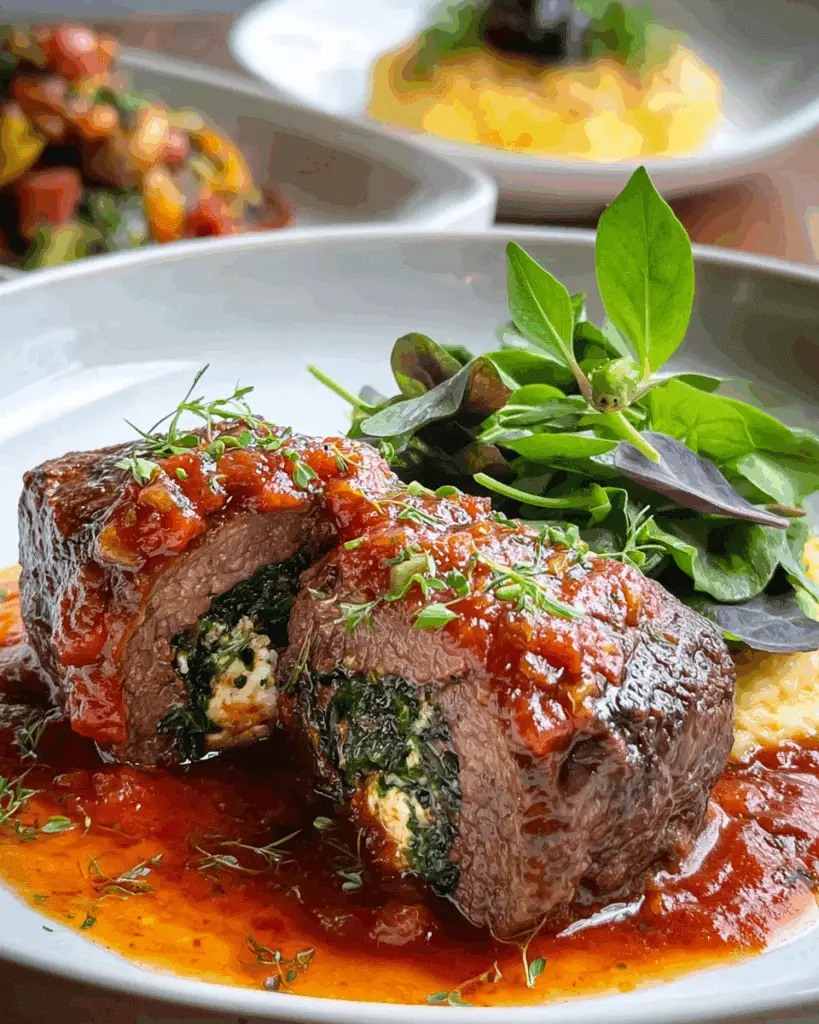
Freezing Beef Braciole: Raw vs. Cooked
Braciole freezes beautifully—whether raw or fully cooked. Here’s what to keep in mind:
Freezing Raw Braciole:
- Roll the Braciole but do not sear or bake
- Wrap tightly in plastic wrap, then foil
- Place in a freezer bag and label with date
- Freeze up to 3 months
When ready: Thaw in the fridge overnight. Then sear, add marinara, and bake as normal.
Freezing Cooked Braciole:
- Let the roll cool completely after cooking
- Slice or leave whole and store with sauce in an airtight container
- Freeze for up to 2 months
To reheat: Thaw overnight, then reheat covered in a skillet at 300°F until warmed through (about 20–25 minutes).
Avoid These Mistakes:
- Don’t freeze Braciole with uncooked spinach—it releases too much water.
- Always freeze in sauce for better protection against freezer burn.
Creative Variations on Beef Braciole
Spicy Braciole: Calabrian Chili and Pepper Flakes
Want to bring some heat to your plate? Spice-lovers can easily dial up the fire with ingredients like Calabrian chili paste, crushed red pepper flakes, or even spicy Italian sausage in the filling.
Here’s a simple spicy modification:
- Swap half of the ricotta with hot Italian sausage (crumbled and cooked)
- Mix in 1 tsp of Calabrian chili paste or ½ tsp red pepper flakes to the filling
- Add a dash of chili oil to the marinara for a slow-burn finish
Flavor Booster: Top each slice with a drizzle of hot honey before serving. (Try this Hot Honey Ranch for an addictive flavor hit.)
Vegetarian Braciole: Eggplant or Zucchini Rolls
Craving Braciole without the beef? It’s easy to make a vegetarian version that’s just as satisfying.
Try this:
- Slice eggplant or zucchini lengthwise into thin strips
- Roast or grill slices until pliable
- Use the same ricotta-spinach filling, roll, and bake in marinara sauce
Bonus: Add roasted red peppers or mushrooms for extra depth.
Cheese-Loaded Braciole: Mozzarella Core
Traditional Braciole already includes cheeses like ricotta and Parmesan, but for next-level gooeyness, insert a strip of low-moisture mozzarella in the center of the roll.
As it bakes, it creates a molten center that oozes out with every slice. Braciole or lasagna? You decide.
Braciole with Wine Reduction Sauce
Instead of marinara, some regional versions of Braciole use a red wine reduction sauce. This is a richer, more refined option perfect for holiday meals.
To make it:
- After searing the roll, deglaze the skillet with 1 cup red wine
- Add 1 cup of beef stock, garlic, and rosemary
- Simmer until reduced by half, then bake the Braciole in the sauce
Seafood-Inspired: Shrimp & Crab Braciole (Fusion)
This is for the bold cook looking to break traditions:
- Use thin chicken breast instead of beef
- Fill with ricotta, herbs, and finely chopped shrimp or crab meat
- Roll and bake in a lemon-garlic white wine sauce
Unexpected? Yes. Delicious? Absolutely.
These creative spins let you adapt Braciole to the occasion, your guests, or whatever you’ve got in the fridge.
Frequently Asked Questions About Beef Braciole
What cut of beef is best for Braciole?
The most commonly used cut for Braciole is flank steak because it’s lean, thin, and tender when cooked low and slow. You can also use top round or sirloin if flank steak isn’t available. The key is to slice or pound the beef thin so it rolls easily and cooks evenly.
How do you keep Braciole from falling apart?
To keep Braciole intact, you must roll it tightly and secure it well. Use either toothpicks or kitchen twine spaced evenly along the roll. Always sear the roll first to firm up the shape, then cook it covered in sauce. Don’t forget to remove the toothpicks before serving!
Can you make Braciole without browning it first?
Technically, yes—but it’s not recommended. Browning the beef adds depth of flavor and helps seal in moisture. If you skip the searing step, the final dish may be more bland and less visually appealing. So take the extra few minutes to sear—it’s worth it.
What is traditionally served with Beef Braciole?
Braciole is typically served with pasta, polenta, or crusty bread, all of which soak up the savory sauce beautifully. On the side, try a simple green salad, roasted vegetables, or garlicky sautéed spinach to balance the richness of the dish.
Is Braciole better with marinara or wine sauce?
This comes down to preference. Marinara sauce offers a classic, tomato-rich flavor perfect for traditionalists. A red wine reduction sauce provides a more robust, elegant flavor that’s great for special occasions. Both are delicious, so pick what fits your mood.
Can you freeze Beef Braciole?
Absolutely. You can freeze Braciole either before cooking (assembled and raw) or after it’s baked. If freezing raw, wrap it tightly in plastic and foil. If freezing cooked, store it in sauce in an airtight container. In both cases, it’ll keep for 2–3 months.
Final Thoughts – Why Beef Braciole Belongs in Your Recipe Repertoire
Beef Braciole is more than just a meal—it’s a soulful experience passed down through generations of Italian kitchens. From its cheesy herb stuffing to its slow-baked tenderness in marinara sauce, Braciole brings unmatched flavor and elegance to the table. You can even explore other Italian beef inspirations like this mouthwatering French Onion Beef Tortellini.
Whether you’re crafting it for a Sunday supper, a cozy date night, or a festive holiday gathering, Braciole rewards you with flavor, comfort, and heritage in every bite.

